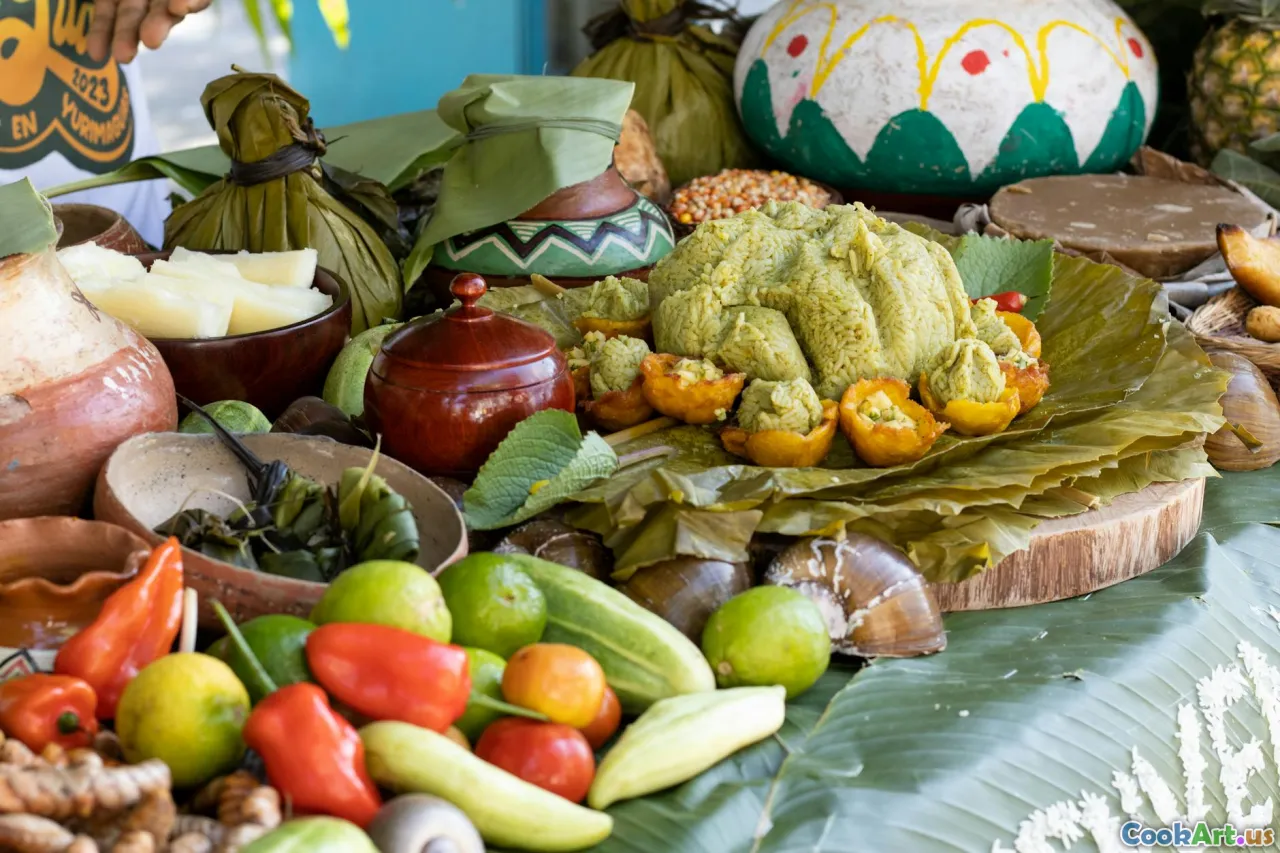Culinary Traditions of Croatia
8 min read Explore Croatia's rich culinary tapestry, from coastal seafood to inland hearty stews, revealing centuries-old traditions and authentic flavors that define its vibrant food culture. June 07, 2025 18:01
Culinary Traditions of Croatia
Croatia, a jewel nestled along the shimmering Adriatic coast, offers a culinary landscape as diverse and captivating as its breathtaking scenery. Imagine the scent of freshly grilled fish wafting over seaside villages, the aroma of rustic meats simmering in aromatic broths, and the vibrant colors of fresh herbs and vegetables that adorn every table. This is a country where food is not merely sustenance but a profound expression of history, geography, and communal identity.
An Introduction to Croatia’s Culinary Tapestry
Croatia’s culinary heritage is a mosaic crafted over centuries, shaped by its position at the crossroads of Central Europe, the Mediterranean, and the Balkans. Each region boasts distinct flavors, ingredients, and cooking techniques, creating a rich palette of tastes that tell stories of conquests, trade, and local traditions.
From the sun-drenched Dalmatian coast to the lush inland forests of Gorski Kotar, Croatian cuisine is a reflection of its diverse geography. The coastal areas are renowned for their seafood, olive oils, and sun-ripened vegetables, while the inland regions favor hearty meats, dairy, and mountain herbs. This geographical diversity fosters a culinary culture that is both vibrant and deeply rooted in community and tradition.
Coastal Croatia: The Sea’s Bounty
Seafood and Fish: The Heartbeat of the Coast
On the Dalmatian coast, the ocean is an endless supermarket, supplying fresh fish and shellfish that are central to local diets. Grilled sardines, octopus salad, and calamari are staples, often seasoned simply with lemon, garlic, and olive oil to enhance their natural flavors.
Olive Oil and Vegetables
Croatia’s olive oils are celebrated for their quality, bearing the distinct flavors of local varieties like Buža and Oblica. These oils serve as the cornerstone for many dishes—drizzling over grilled fish or dressing fresh salads featuring ripe tomatoes, cucumbers, and aromatic herbs like basil and oregano.
Traditional Coastal Dishes
- Pasticada: A slow-cooked beef stew marinated in red wine, garlic, and herbs, traditionally served with homemade gnocchi. Its rich, savory profile is a testament to Dalmatian patience and culinary artistry.
- Brudet: A hearty fish stew simmered with tomatoes, wine, and herbs, embodying the coastal essence of Croatian cooking.
The Social Role of Food
Meals along the coast are communal affairs, often enjoyed outdoors with family and friends. The slow pace of life allows for lingering over dishes, savoring every bite and sharing stories that pass down through generations.
Inland Croatia: Heartier Flavors and Traditional Techniques
Meats and Game
In the inland regions, especially in Slavonia and Gorski Kotar, meat plays a starring role. Pork, lamb, and game animals like deer are prepared using age-old methods—smoked, roasted, or stewed—producing dishes that are robust and filling.
Dairy and Pastries
Local dairy products such as cheese and yogurt are integral to the cuisine. Strukli, a baked or boiled pastry filled with fresh cheese, exemplifies Croatian comfort food, often served with sour cream.
Signature Dishes
- Čevapi: Minced meat sausages grilled to perfection, typically served with flatbread, raw onions, and ajvar—a red pepper relish.
- Sarma: Cabbage rolls filled with seasoned minced meat and rice, slow-cooked to meld flavors and tenderize the ingredients.
Food Preservation Techniques
Croatian inland communities have mastered preservation methods—smoking, curing, and pickling—to sustain them through harsh winters. These techniques not only preserve food but also infuse dishes with smoky, intense flavors.
The Influence of History and Culture
Croatian culinary traditions are a living testament to centuries of cultural exchange. Venetian influence introduced sophisticated pasta dishes and seafood preparations, while Ottoman rule brought spices and preserved vegetables. The Austro-Hungarian Empire contributed hearty stews and baked goods, blending into a unique local cuisine.
Religious and Festive Food Traditions
Religious festivals and local saints’ days are occasions for special dishes—paska bread during Easter, fritule (fried dough balls) during Christmas, and lamb roasts for local patron saint celebrations. These foods foster community bonds and preserve ancient customs.
Personal Reflections: A Journey Through Flavors
As a food enthusiast wandering through Croatia, I have been captivated by the sensory symphony each region offers. Sitting in a seaside tavern, savoring fresh fish grilled over open flames, feels like tasting the very essence of the Adriatic. Climbing into mountain villages, I’ve enjoyed hearty stews that warm the soul after a day of exploring rugged landscapes.
One memory that stays vivid is the aroma of freshly baked pogača (bread) in a small inland bakery, mingling with the scent of roasted meats. Each dish is crafted with love, rooted in traditions passed down through generations, making Croatian cuisine not just a feast for the palate but a journey through history and culture.
Modern Trends and the Future of Croatian Food
Today, Croatia’s culinary landscape is embracing modern gastronomy while honoring tradition. Young chefs are experimenting with local ingredients—infusing contemporary techniques into age-old recipes, and elevating simple dishes to haute cuisine.
Farm-to-table movements, organic farming, and sustainable fishing are gaining prominence, ensuring the preservation of authentic flavors and ecological balance. Food festivals celebrating regional specialties attract both locals and tourists, fostering a deeper appreciation for Croatia’s gastronomic heritage.
Concluding Thoughts
Croatia’s culinary traditions are a mirror reflecting its soul—diverse, resilient, and deeply rooted in community and history. Whether savoring an aromatic coastal seafood platter or enjoying a hearty inland stew, every bite offers a taste of a land that has harmonized the flavors of its varied landscapes and cultural influences.
For food lovers and cultural explorers alike, Croatian cuisine is a treasure trove of stories, flavors, and memories waiting to be experienced. It invites you to slow down, savor each mouthful, and become part of its enduring culinary heritage.
Embark on your own journey through Croatia’s flavors, and discover why its food is much more than nourishment—it's a celebration of life itself.









